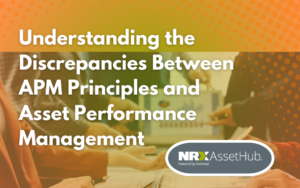In the world of asset management, the importance of efficiency cannot be overstated. Whether it’s managing financial investments, physical properties, or digital resources, the goal remains the same: optimize performance and minimize risks. However, what happens when the effort required to rectify issues seems insurmountable, leaving one questioning if it’s worth the hassle? This dilemma is not uncommon and warrants a deeper exploration.
Asset management encompasses a broad spectrum of responsibilities, ranging from routine maintenance to strategic decision-making. At times, these responsibilities can become burdensome, especially when faced with complex issues that demand substantial time, resources, and expertise to resolve. It’s in these moments that doubts may arise, clouding one’s judgment about the feasibility and benefits of tackling the problem.

One primary challenge is the uncertainty surrounding the potential outcomes of addressing the issue. Will the investment of time and resources yield significant improvements? Or will it merely scratch the surface, leaving underlying issues unresolved? Without a clear understanding of the expected return on investment, decision-makers may hesitate to commit to a course of action, fearing wasted effort and resources.
Moreover, the sheer magnitude of the problem can be overwhelming. Some issues in asset management are deeply rooted, requiring comprehensive overhauls of existing systems or processes. Such endeavors demand meticulous planning, coordination across multiple stakeholders, and a willingness to embrace change—a daunting prospect for many organizations. Faced with these Herculean tasks, it’s natural to question whether the potential benefits justify the immense effort required.
Another factor exacerbating the problem is the lack of readily available solutions or best practices. Asset management issues are often nuanced and context-dependent, defying one-size-fits-all solutions. Consequently, decision-makers may find themselves in uncharted territory, grappling with uncertainty and ambiguity. In the absence of clear guidance, the path forward appears murky, further fueling doubts and indecision.
Furthermore, the opportunity cost of addressing one issue over another adds another layer of complexity. With finite resources at their disposal, organizations must prioritize which problems to tackle based on their potential impact and alignment with strategic objectives. Yet, this process of triage can be fraught with challenges, as conflicting priorities and competing interests vie for attention. Consequently, some issues may languish unresolved, perpetuating a cycle of neglect and inefficiency.

In conclusion, the challenge of addressing issues in asset management that seem overwhelming is a pervasive dilemma faced by organizations across industries. While the path may be arduous, the rewards of proactive problem-solving far outweigh the costs of inaction.
How Can We Help You?
HubHead’s benchmarking service can provide valuable support. Our experienced consultants have helped numerous companies achieve excellence through comprehensive benchmarking analysis that provides a roadmap to operational excellence. To learn more about how we can help you, contact us to book a meeting or download our brochure.
Understanding the Discrepancies Between APM Principles and Asset Performance Management
Overcoming the Hurdles: Simplifying the Process of Ordering Spare Parts Through Visuals
The Vital Importance of Embracing Innovation in Spare Parts Procurement
Share this article




